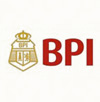All Categories
Tips and Techniques in Laparoscopic Surgery
Share Tweet
*Price and Stocks may change without prior notice
*Packaging of actual item may differ from photo shown
- Electrical items MAY be 110 volts.
- 7 Day Return Policy
- All products are genuine and original








About Tips And Techniques In Laparoscopic Surgery
Performing a surgical operation could be compared to na- gating inside the human body. Two essential requirements are necessary for a successful apprenticeship: ? A perfect understanding of the roadmap, the anatomy ? Regular training with expert surgeon teachers showing str- egies, tactics, manoeuvres, and gestures to make the journey safe, efficient and fast For decades this was the way taken by apprentice-surgeons and also by surgeons already in practice concerned about upd- ing their knowledge. For years their only travelling companions were books, drawings, and pictures. However, printed medium cannot satisfactorily and properly reproduce the movements of a manoeuvring surgeon. In open surgery, only the two first - sistants can precisely capture by direct vision what is happ- ing in the depth of the operating field. Therefore, the duration of apprenticeship is long and restricted to a small number of people per teacher. The introduction of movie cameras into the operating rooms improved the quality of surgical education. But filming in open surgery is not so easy. The cameraperson has to be well trained to catch good takes in the depth of a pit between the heads, shoulders, and fingers of the surgeon and assistants. Most of the time, those constraints disturb the op- ator’s manoeuvres, altering their pedagogical value. With the introduction of laparoscopic surgery (LS), using a video camera providing images in real time on a television screen, everything changed.

















